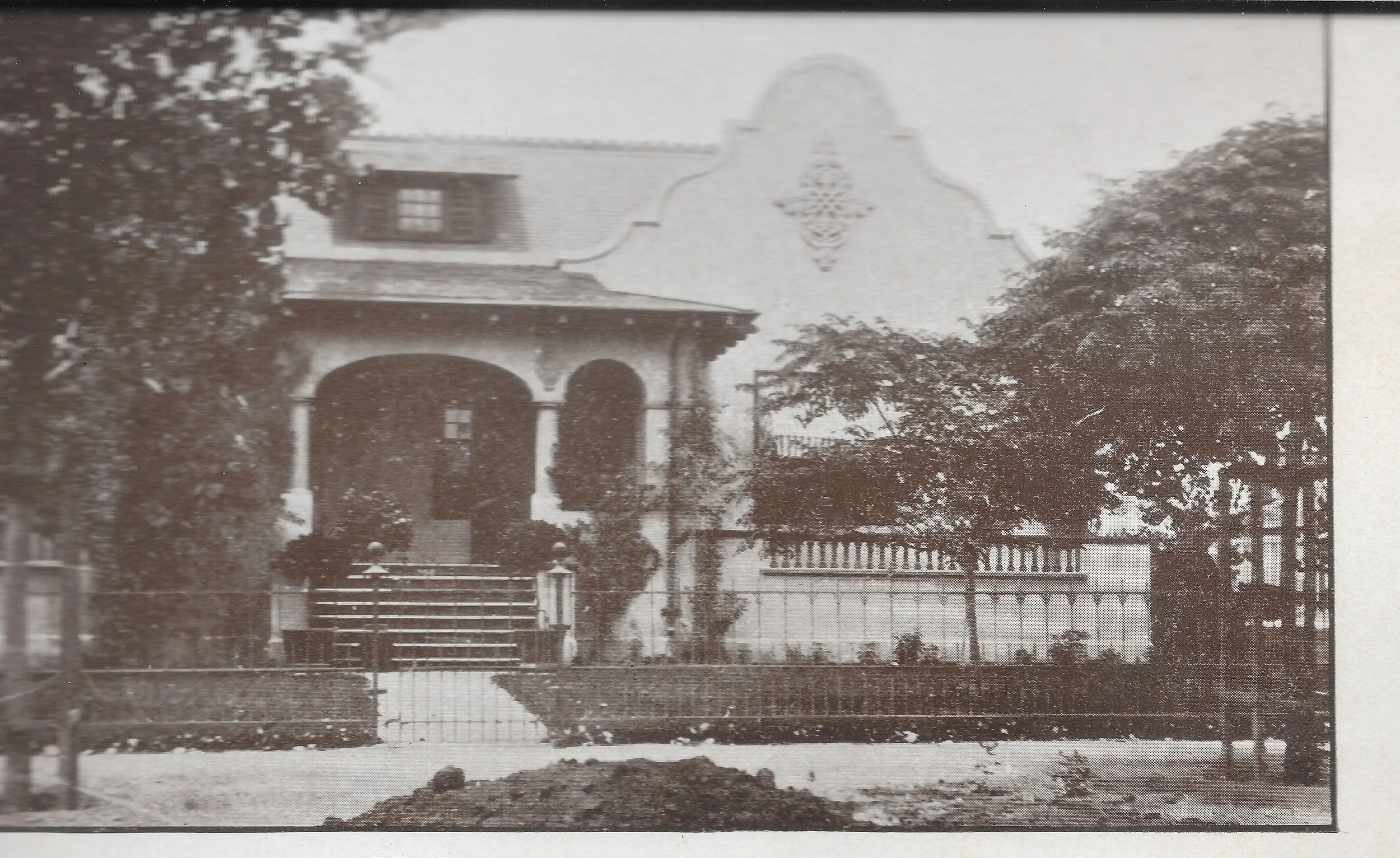
Time is Viscous: A Collaborative Exhibition by Mieko Hara and the Douglas Historical Society
Historic Homes Featured in the Spark! Exhibition
Text provided by Cindy Haypstek, Douglas Historical Society
Douglas-Williams House Museum
1001 D Avenue
Built in 1909 by James S. Douglas, son of James W. Douglas—the namesake of the town—this home reflects the legacy of the Douglas family and their involvement in the copper industry through Phelps Dodge Corp. In 1943, James S. Douglas sold the house to Ben F. Williams, a border businessman and cattleman who served as mayor of Douglas from 1948 to 1950. Like Douglas, Williams raised his two children in the home. His son, Ben F. Williams Jr., also served as mayor from 1980 to 1988. The house was sold to the State of Arizona in 1985, after Williams Sr.’s passing, and is now operated as a museum by the Douglas Historical Society.
908 E Avenue
Built around 1903 by Phelps Dodge Corp. in Territorial style, this home is one of three on the block originally built for company executives. Stuart W. French, PD general manager, and his wife Nellie, were the first occupants. Nellie is recognized as the first teacher of the Baháʼí Faith in Arizona. The couple left Douglas in 1917 to volunteer during World War I. French later became an executive with the national Boy Scouts, and Nellie worked with her faith’s international organization.
P. G. Beckett succeeded French and lived in the home until 1946. It later served as a guest house for PD officials for 45 years. The house was purchased in the 1990s by Mike and Amanda Ames and is now owned by Drs. Jonathan and Darlene Melk of Chiricahua Community Health Center.
501 D Avenue
Built around 1904 by contractor Jacques Ardisson, a French immigrant, this home was designed in French mansard style. Its height made it a popular viewing point for Mexican Revolutionary battles. After the Ardissons left during World War I, the building housed a variety of residents and businesses on the ground floor, including grocery stores and restaurants. The Novoa family has owned the property since the mid-1960s.
646 11th Street
Constructed of locally quarried tufa stone—a type of limestone also used in the Methodist and Presbyterian churches on Douglas’s church square—this house was first occupied by Horace E. Dugan, one of Douglas’s first real estate agents. In 1922, the home was sold to William C. Gilmore, a prominent Cochise County attorney. Gilmore successfully defended Harry E. Wooten in 1921 during the first trial related to the Bisbee Deportation, ensuring no further prosecutions.
In 1922, Gilmore was acquitted in his own trial for the shooting death of a man who broke into his Tombstone home. He moved to Douglas the following year and married Laura Funkhauser, who studied law in his office and became Cochise County’s first female attorney in 1931. The Gilmores shared an office until her death in 1940, and Gilmore continued practicing law in Douglas until 1948.
1040 Ninth Street
Built before World War I using local materials, the house features a fireplace and porch made of malpais, volcanic rock common to the San Bernardino Valley. The Robertson family occupied the home for approximately 50 years. They were ranchers and farmers who represent the agricultural roots of the region.
William B. “Bud” Robertson, son of William Ben and Marguerite Robertson, was raised on a Cloverdale ranch along with his siblings Asa, Marguerite, and Cordelia. Their aunt, Sylvia Austin, worked for Phelps Dodge Mercantile with her husband Hiram and moved into the home after World War II. Bud, a World War II veteran, returned to Douglas in 1953 and moved into 1040 in the 1970s. After his death in 1991, his son E. E. Robertson lived in the home until 2000.


